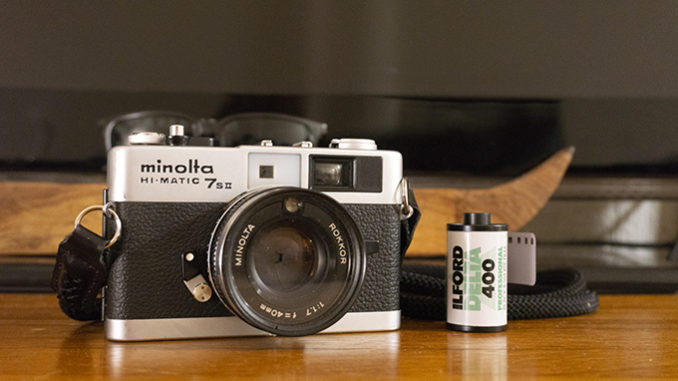
A Vintage look at the Minolta Hi- Matic 7sII
By Brandon Huff
Ahhh the Minolta 7sII, a sleek Japanese Rangefinder curated in 1977 as an upgrade from earlier renditions dating back to 1962.
The camera I used/bought was equipped with a 40mm Rokkor f/1.7 Lens and a Skylight 1A filter. When I originally bought this rangefinder I was seeking out deals on craigslist so I could flip some cameras to save up and purchase the street photography setup of my dreams, however after having this rugged little beast I can’t decide if I want to keep it or sell it!
The size of the camera fits in my hands almost perfectly and weighing only 1.2 pounds with a strap means the weight on my shoulders is almost non-existent. Granted I’m not to bothered by weight as I used to carry around a Mamiya 645. Besides weight *almost* everything about this camera is butter, from the ease of loading film, to the smooth focus of the lens. I absolutely enjoyed using  this camera out in the field.
As stated above the lens on this camera is a 40mm Rokkor f/1.7. I personally found this focal length to be a little bit too wide for the street photos I use it for, however if you do like a wide focal length for street photography then this lens is the only one you’ll need. The sharpness and bokeh you get from this lens is fantastic. What makes this an even better street photography machine is the fact that it has a Copal leaf shutter, allowing for a shutter speed range of 1/8th 1/500th of a second as well as a Bulb mode.
YES! This camera does have a metering system, unfortunately mine was inoperative which forced me to use the Sunny 16 rule for all these shots which was unfortunate but makes me a better photographer in the end. In a camera with a working light meter, it will utilize a CdS Cell which essentially allows the camera to work in a Shutter Priority mode with an ASA range of 25-800
Here are some shots below!
Shot at F16 500th – Ilford Delta 400 Developed in Ilfosol 3
–
–
Shot at F11 500th – Ilford Delta 400 Developed in Ilfosol 3
The Bad
Above I stated a bunch of points of why I like the camera and some basic information on the hardware lets transition to a short blip about some negatives I experienced. Now in all honesty I don’t have many negatives against this camera. I love how it looks, I love how it feels, I love the photos it takes, and I love the lens. The one thing I don’t love is the viewfinder. I have always loved rangefinders and honestly prefer them, this rangefinder however is very dim and the focus patch is difficult to use unless you’re in direct sunlight. Forget about focusing this camera in any dim situation, Every single attempt I tried at a low light photo turned out to be a ill focused spaghetti monster. If Minolta had used Leica as a reference model (yes I know about the Leica CL 😉 ) Â I know this would be the ultimate compact rangefinder for street photography. Aside from the viewfinder issues my other complaint would be the light meter, I can’t exactly talk on that point since mine doesn’t work But thats my complaint. Here are some examples of why you may not want this camera for low light…
Should you shoot with one?
All in all YES! You should grab yourself a Minolta Hi-Matic 7sII, they go on ebay for around $120-$200 dollars if you want the 40mm Rokkor. If you’re serious about film photography or even just starting out I think this camera is a great transition into the film world. Not only do you get a well built machine but a beautiful lens for less then 250 US dollars, you don’t need a battery to run this unit and you will become better at photography in every way using this camera in manual mode. I wouldn’t even try to use the automatic modes with this camera. Even if you get one with a working light meter our new eco-friendly batteries cause the meter to give incorrect readouts. Not only is it fun to use but its almost sexy, a classic design that will never go out of style and a great look next to your morning Starbucks.
Thanks for the read! Please ask questions if you have any 🙂

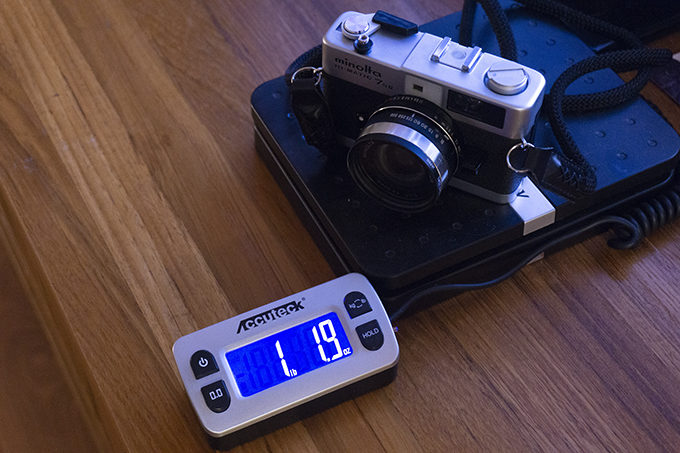
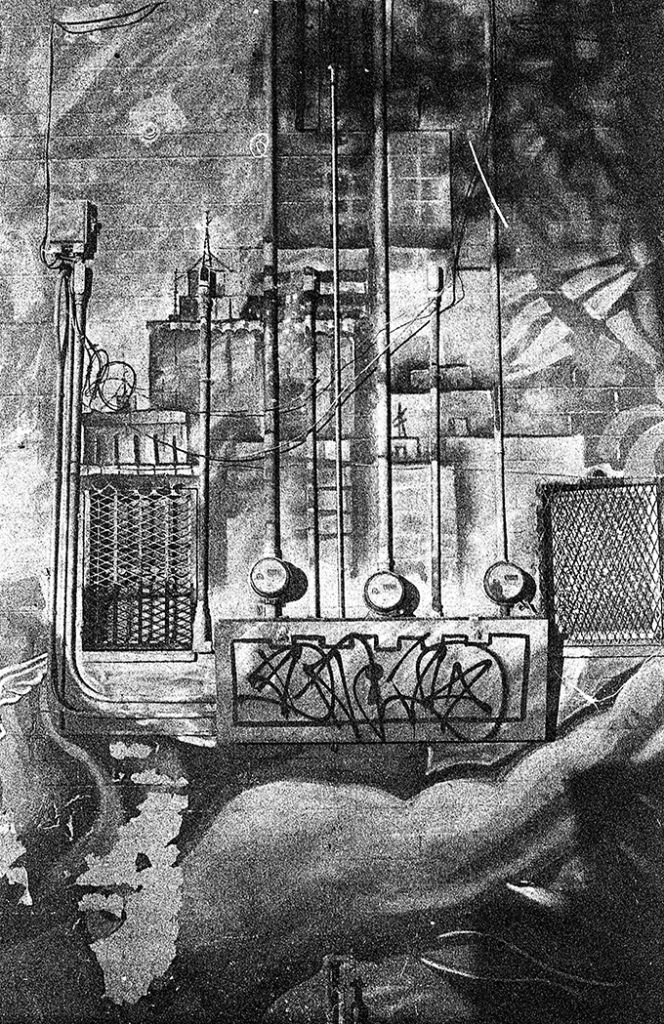
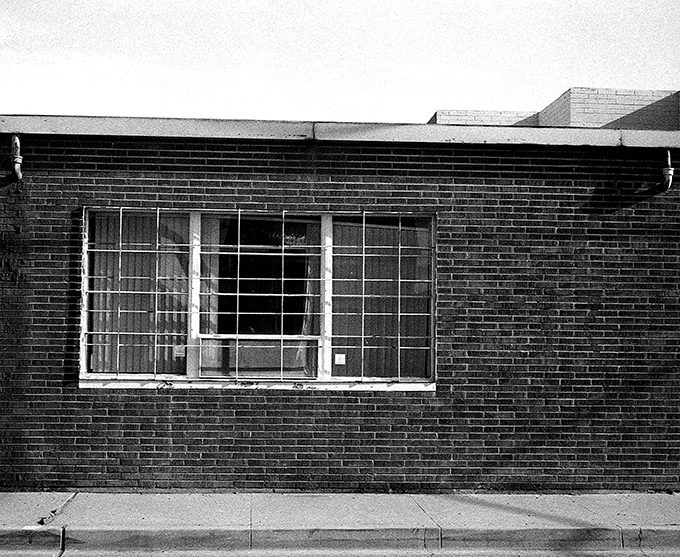
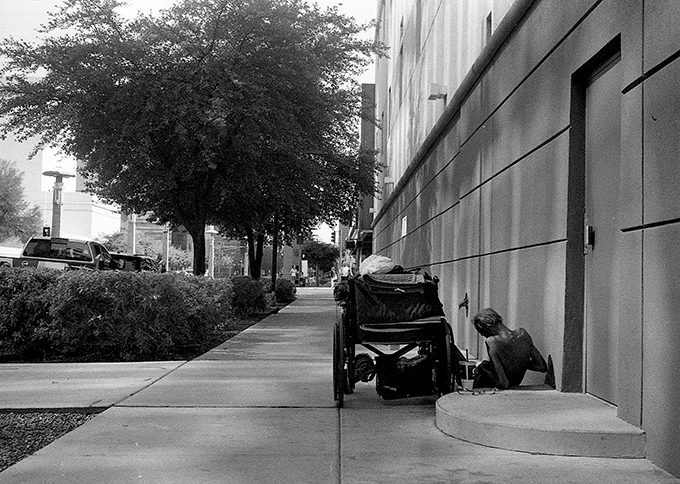
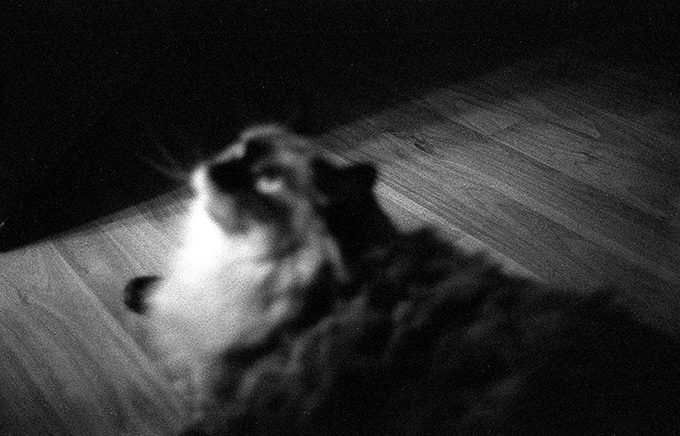
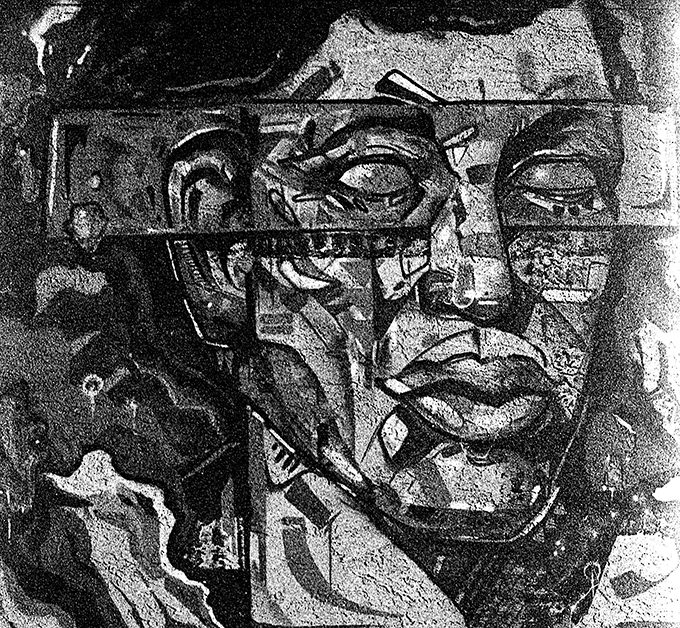
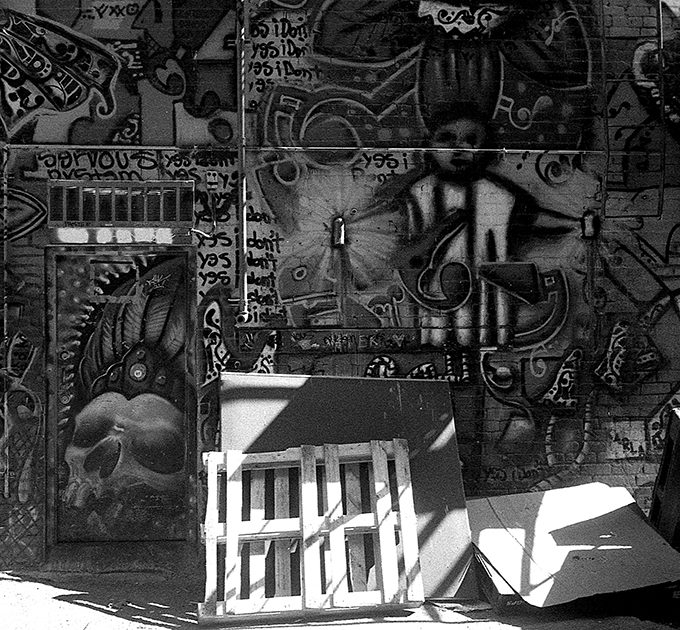
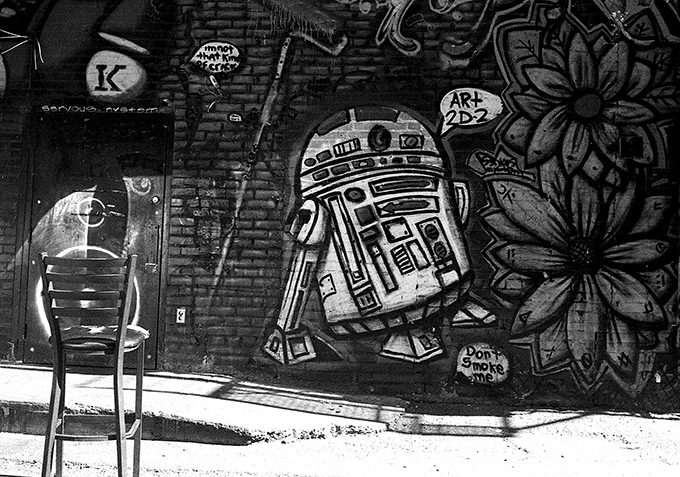
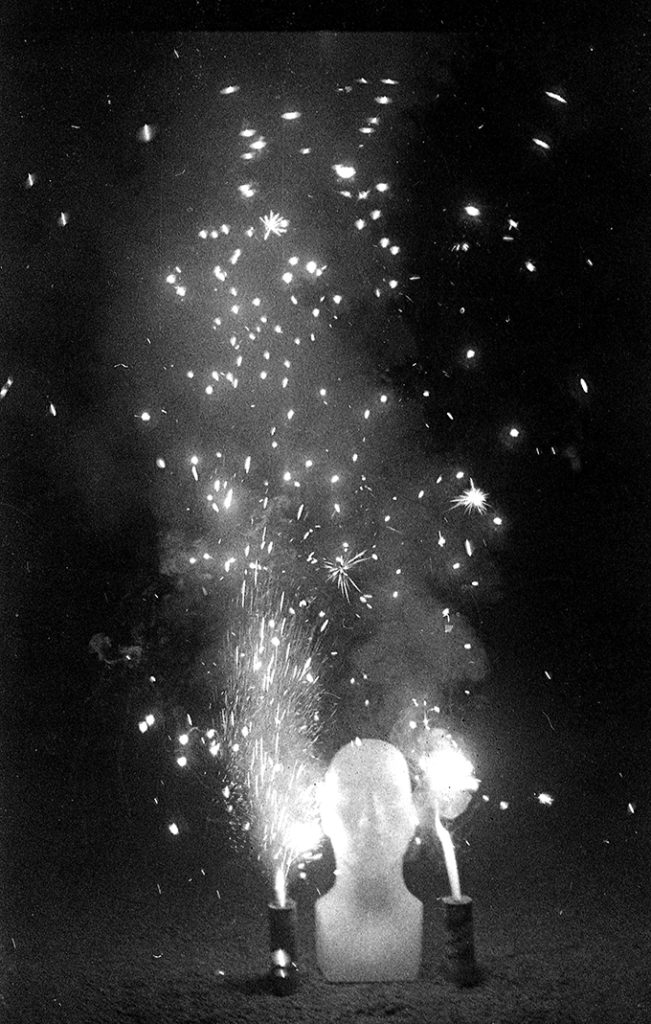



I have the same camera and took some very nice pics with it, namely b&w street. Very sharp and contrasty. Love the camera!
I find this a really good article, Brandon: your interest in film is infectious! And you give such a balanced view of this camera. I hope some of the other comments will help you to straighten out the focussing/VF problems on yours. Also I am really intrigued by your choice of subject matter and the marvellous prints you have produced.
This a great camera. When I do not use my Sony A7 R2, what is often … When I do not use my Leica M3 black what is not often, I mean when I feel my M3 too heavy I use this one, or a Nikon 28TI or a Contax T. The Minolta has only one competitor the Olympus 35 SP. As you say Dear Brandon the Minolta lense is gorgeous and a Leica Summicron-c 40 does not give improvment. The Minolta can also be used totally in manual mode what is real photography. It is small, light and beautiful. Yes, the viewfinder is a pity, but at f8 4 meters everything is in focus and if we just compose, it could be an enough viewfinder. I have the chrome one like you, you can see in my gallery on Eyem : SAULAIRE. The black one is a must but 2 times more expensive, it is crazy gorgeous. One film camera, one lense, one good choice, this one is really on the top ten of the not expensive great pretenders. It does everythings a Leica M does in a little light package with great results. One more Minolta gem !
First, buy a handheld meter. I suggest a Gossen Lune Pro SBC. An excellent meter that has both incident and reflective metering and the SBC (Silicone Blue Cell) is very sensitive. I used this with all my film cameras and did not have to rely on the camera meter. Once you learn incident metering, you will not go back to the camera meter and your exposures will be more consistent as it is not effected by subject reflectance.
As a former Minolta employee (used to write manuals for them in Japan), I can understand your love for the Hi-Matic series. The original Hi-Matic is what put Minolta on the map as a camera manufacturer. Out of a bit of luck, a guy called John Glenn was looking for a camera for a flight. He went to a local camera store and picked up a few cameras and took then back to the engineers he was working with and asked them to modify it. The one that worked the best was an Ansco Autoboy, the third-party branding of the Minolta Hi-Matic in the US.
The flight went well. It was the Mercury 7 flight that made John Glenn the first American to orbit the Earth. Photography was not in the original NASA mission, but I think we are glad that John pick up a camera and took it anyway.
Minolta has a factory in Sakai, Japan. There is a small courtyard in the middle. John Glenn was invited to the factory and he planted a palm tree to commemorate the event. The tree is still there in the courtyard surrounded by the remaining buildings. Hopefully the link works (street view will not show you it, but in some manuals published in the early 2000s has a picture).
https://www.google.com/maps/place/コニカミノルタ堺サイト/@34.5651325,135.4701751,253m/data=!3m1!1e3!4m12!1m6!3m5!1s0x6000d722361d3073:0xa8323cf3835e1db3!2sKonica!8m2!3d34.494816!4d135.542069!3m4!1s0x0:0x688049a6a2ca4162!8m2!3d34.565199!4d135.4704461
A haze forms on the glass surfaces in the rangefinder and that makes it hard to focus. If you take off the top cover the surfaces can be cleaned. Old time camera repair places can easily clean it.
For more info on Minolta rangefinders, go to the Minolta Users Group: http://www.jwhubbers.nl/mug/
scroll down on the left side and click on “HiMatic Rangefinders”
Brandon- just checked my Hi-Matic 7S-II, the viewfinder is clear, framelines bright, aperture numbers visible, and the RF spot is bright. It sounds like the beamsplitter on yours is faded. The CDS cell works on mine as well. Check the battery compartment for any signs of corrosion.
It has a sharp lens. I bought a Minolta Hi-Matic 9 in 1969- still have it, still works. Recently picked up a Minolta 5cm F1.8 in Leica Mount, same formula as the Hi-Matic 9.
Good to know! I’ll have to look into a fix, I did try a new battery as their was no corrosion. Probably a loose wire or something.
hi matics has great lenses, I have a hi matic7 and it’s one of my favorite RF
yes, you don’t need the built in light meter, just use your smartphone apps to meter the lights, or just use sunny16 rule when outdoor
Do you find the RF is a bit dim in your hi-Matic as well?